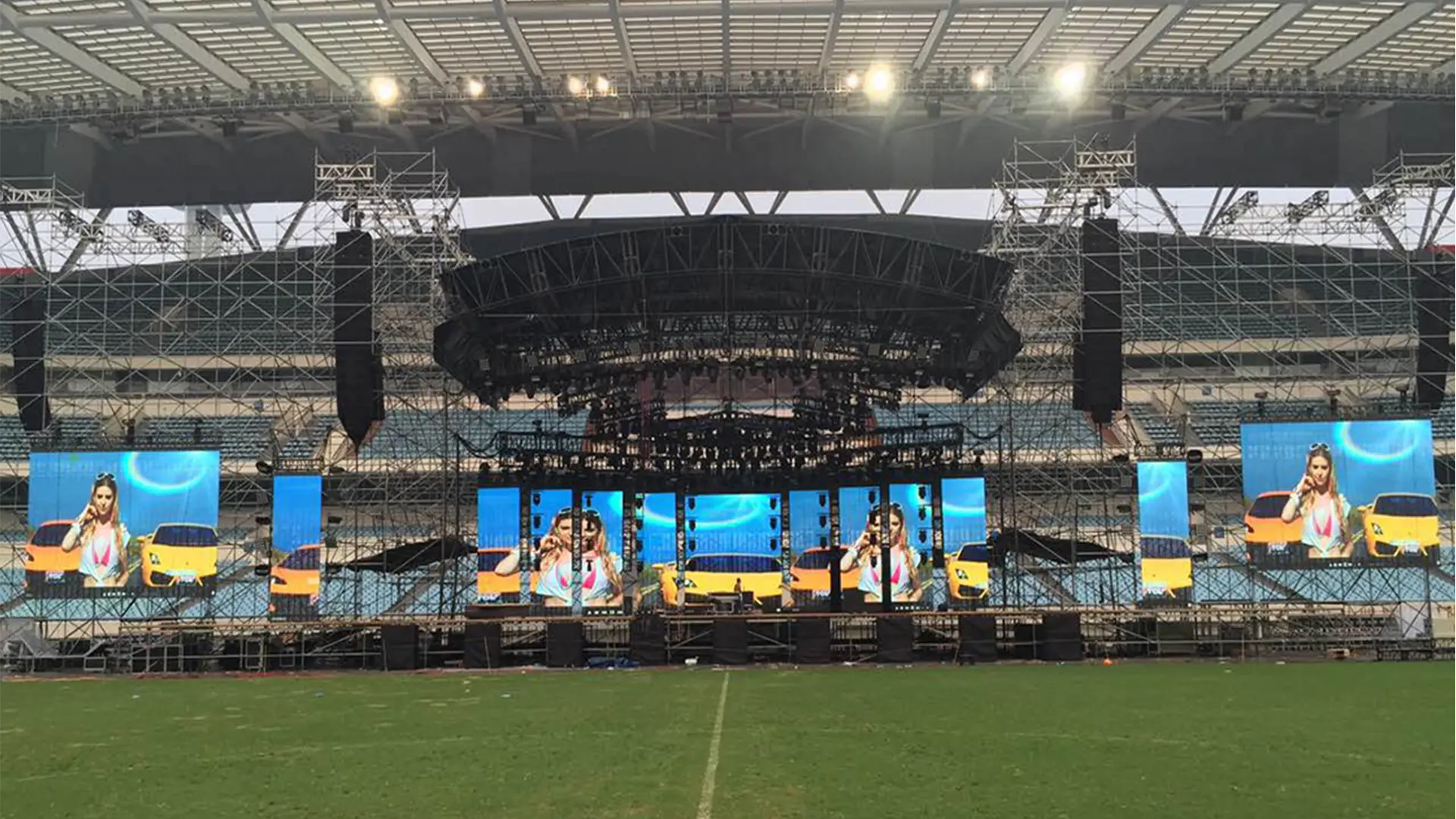
Installing a stage LED display requires careful planning and execution to ensure optimal performance and longevity. Below are answers to common questions that can help guide you through the process, ensuring your stage setup is both effective and reliable.
Before installation, several steps must be taken:
Site Assessment: Ensure the location avoids strong winds, flooding, and obstructions from nearby structures.
Structural Check: Verify that walls or support structures can bear at least 1.5 times the display’s weight.
Power & Network Planning: Plan dedicated power circuits and signal transmission via fiber optic or Ethernet cables.
Weatherproofing: The display enclosure must have an IP65+ waterproof rating; install lightning rods or grounding systems.
Select the appropriate installation method based on your needs:
Wall-Mounted: Suitable for concrete or brick walls; secure using expansion bolts.
Freestanding/Pole-Mounted: Requires a deep foundation (≥1.5m) for stability in open areas like stages.
Suspended: Needs steel support; ensure balance to prevent tilting, which is crucial for stage aesthetics and safety.
To protect against moisture:
Sealing: Use waterproof gaskets between modules and apply silicone sealant for gaps.
Drainage: Include drainage holes at the bottom of the cabinet to prevent water accumulation.
Moisture Protection: Power supplies and control cards should be housed in protective cases or designed to be moisture-resistant.
Proper cable management is essential:
Dedicated Circuits: Power each module or control box independently to avoid overload.
Cable Protection: Shield power lines with PVC or metal conduits; keep signal cables at least 20cm away from high-voltage wires.
Surge Protection: Ground resistance should be less than 4Ω; add surge protectors to signal lines.
After installation, perform these checks:
Pixel Calibration: Use software to adjust brightness and color uniformity, avoiding color deviation.
Brightness Test: Optimize for ambient light conditions (≥5,000 nits for daytime; lower at night).
Signal Test: Check HDMI/DVI inputs for smooth playback, ensuring no interruptions during performances.
Regular maintenance ensures longevity:
Cleaning: Remove dust with soft brushes; avoid using high-pressure water jets.
Hardware Inspection: Tighten screws and inspect supports quarterly.
Cooling System Maintenance: Clean fans and air conditioner filters regularly. Operating temperature range: -20°C to 50°C.
Prepare for severe weather:
Power Off: Disconnect electricity during storms to prevent lightning damage.
Reinforcement: Add wind-resistant cables or temporarily remove modules in typhoon-prone areas.
Key considerations include:
Temperature: High heat accelerates aging; install cooling systems.
Usage Time: Limit daily operation to under 12 hours and allow intermittent rest periods.
Environmental Exposure: In coastal or dusty areas, use anti-corrosion materials such as aluminum cabinets.
By following these guidelines, you can maximize the performance and longevity of your stage LED display, ensuring it operates reliably and effectively in any environment.
Hot Recommendations
Hot Products
Get a Free Quote Instantly!
Talk to Our Sales Team Now.
If you are interested in our products, please contact us promptly
Reach out to our sales team to explore customized solutions that perfectly meet your business needs and address any questions you may have.
Email Address:info@reissopto.comFactory Address:Building 6, Huike Flat Panel Display Industrial Park, No. 1, Gongye 2nd Road, Shiyan Shilong Community, Bao'an District, Shenzhen city , China
whatsapp:+8615217757270